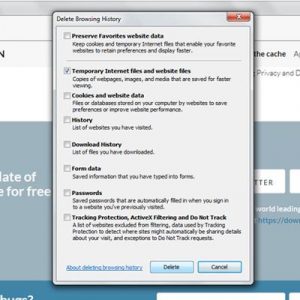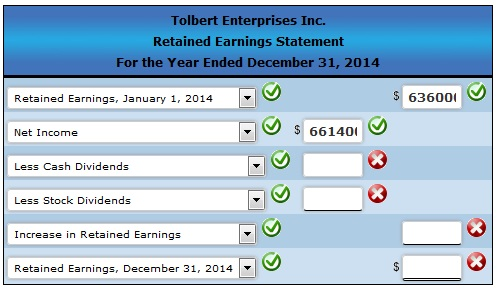Bookkeeping Basics for the Small Business Owner

Organize your receipts (including receipts for charitable contributions) and accurately record deposits. “Founders are typically smart, and [handling my own bookkeeping] is what I would do too,” she says. Eversmann encourages business owners to follow IRS guidelines on tracking transactions and to save all receipts for seven years. Your accounting ledger serves as the hub for all your financial information—in particular, all your accounts and transactions.
Separate your personal and business expenses
And the only way to know that for sure is to have accurate, up-to-date books. Keep records of your business transactions for 6 years if you don’t report income and if the income represents over 25% of your return gross income. An easy tip you can implement starting today is setting reminders. Set a date early enough each month to give you time to prepare the paperwork. As you review financial statements, you want to look for patterns. It’s important to understand the trajectories and trends so you can learn how to make better-informed business decisions in the future.
When is it time to hire someone?
With each pay run, make sure you set aside savings to cover the payroll tax from the employee’s pay. …just because your bookkeeper may know more than you about bookkeeping, doesn’t necessarily mean it’s being done right. Below is a list of the most common tasks that are a part of the bookkeeping process.

Explore what you can do with QuickBooks
- As a small-business owner, individual transactions matter — but so do your overall financial trends.
- Liabilities refer to money you owe that will leave your business and get paid to another party at a future date.
- When cash is your only option, file digital copies of receipts in your accounting software.
- Keeping an accurate, up-to-date set of books is the best way to keep track of tax deductions (expenses that you can deduct from your taxable income).
Text wrapping is particularly useful when working with lengthy sentences or paragraphs within cells. It allows you to display the full content of the text while maintaining the cell’s width. Conditional formatting enables you to automatically apply different colors, icons, or data bars to cells based on their values or criteria you define. This can help you quickly identify patterns, trends, and outliers in your data.

You know what’s even better than using software to automate your bookkeeping? Routinely cross-check receipts and cash flow during your weekly bookkeeping contribution margin ratio session to keep your cash systems polished and up-to-date. With the first, you’ll create a receipt for every cash payment you receive.
The first method of accounting is the cash-based accounting method. This method records financial transactions when money is exchanged. This https://www.wave-accounting.net/ means that you don’t record an invoice until it is actually paid. Similarly, you don’t notate outstanding bills until you actually pay them.
Don’t forget to save money for office supplies, inventory, maintenance, and repairs. Budget your business for the future to avoid unnecessary stress and surprises. For growing businesses, it’s important to recognize the best time to make the most out of the opportunities that arise. When you review the sales shown on your financial reports for the past few months, you can get insight into your future sales. For LLCs or corporations, a separate account for personal finances is a must.

These withdrawals, also known as an owner’s draw, are easy to track and document in your bookkeeping. Whether you pay yourself officially by draw or salary, those transfers should be recorded in your business account statements. Do you have more questions about the bookkeeping process for small businesses? Wondering how best to collect and track financial information, deal with expense management, and ensure healthy cash flow for your business? Here are some of the most frequently asked questions on bookkeeping for small businesses. When you first begin the bookkeeping journey, collect everything you have that could be relevant to establishing financial history.
Choose one that works with your bookkeeping software, and payroll will be a snap, too. Accounting manuals serve as the foundation of a company’s financial structure, encompassing detailed instructions for accounting policies and procedures. This manual will guide you through the process and share an accountant-approved example you can learn from. Let’s say you want to write off some office furniture on your taxes.
Cash may be king, but it needs a bit of extra attention when it comes to DIY bookkeeping. You don’t ever want to lose track of your cash, and unlike checks or online payments, cash doesn’t come with https://www.intuit-payroll.org/reported-daily-contract-rates/ handy documentation. Thankfully, once you have a simple system in place, documenting your cash flow is easy. If you’re using accounting software, financial reports might be automatically generated.
This will highlight the entire row and the selected row will typically turn a different color to indicate its selection, such as a light blue. Selecting an entire row allows you to apply formatting, sort data, or delete rows quickly, without making individual cell selections. The ampersand symbol, &, allows you to combine the contents of multiple cells into a single cell.
Double-entry accounting enters every transaction twice as both a debit and a credit. Your business’s books are balanced when all of the debits equal (or cancel out) all of the credits. Although it’s more complicated, it can prevent bookkeeping errors. And since it takes equity, assets and liabilities — on top of expenses and income — into account, it typically gives you a more accurate financial snapshot of your business. Single-entry accounting records all of your transactions once, either as an expense or as income.
It’s a key component of the accounting process and can be done as frequently as daily, weekly or monthly. Accurate bookkeeping is vital to filing tax returns and having the financial insights to make sound business decisions. The accrual-based accounting method works better with double-entry bookkeeping, so it’s best for more complex business structures or businesses that keep inventory or sell goods. You record transactions as soon as they’re invoiced or billed, even if the money isn’t in your metaphorical pockets yet. Accounting software can streamline your bookkeeping process and make your financial management more efficient. It’s useful for business owners looking to save time and avoid common accounting errors.
You’re not actually making or losing any money—it’s just in a new place. Liabilities refer to money you owe that will leave your business and get paid to another party at a future date. We know, we know—that doesn’t make bookkeeping any less boring and painful. As procrastination-worthy as it may seem, bookkeeping is a necessary part of successfully running your business. Creating a budget for expenses like office supplies, inventory and repairs and maintenance can help your business function efficiently. Block out a weekly time to get your paperwork in order and avoid letting the receipts pile up.
[/restrict]